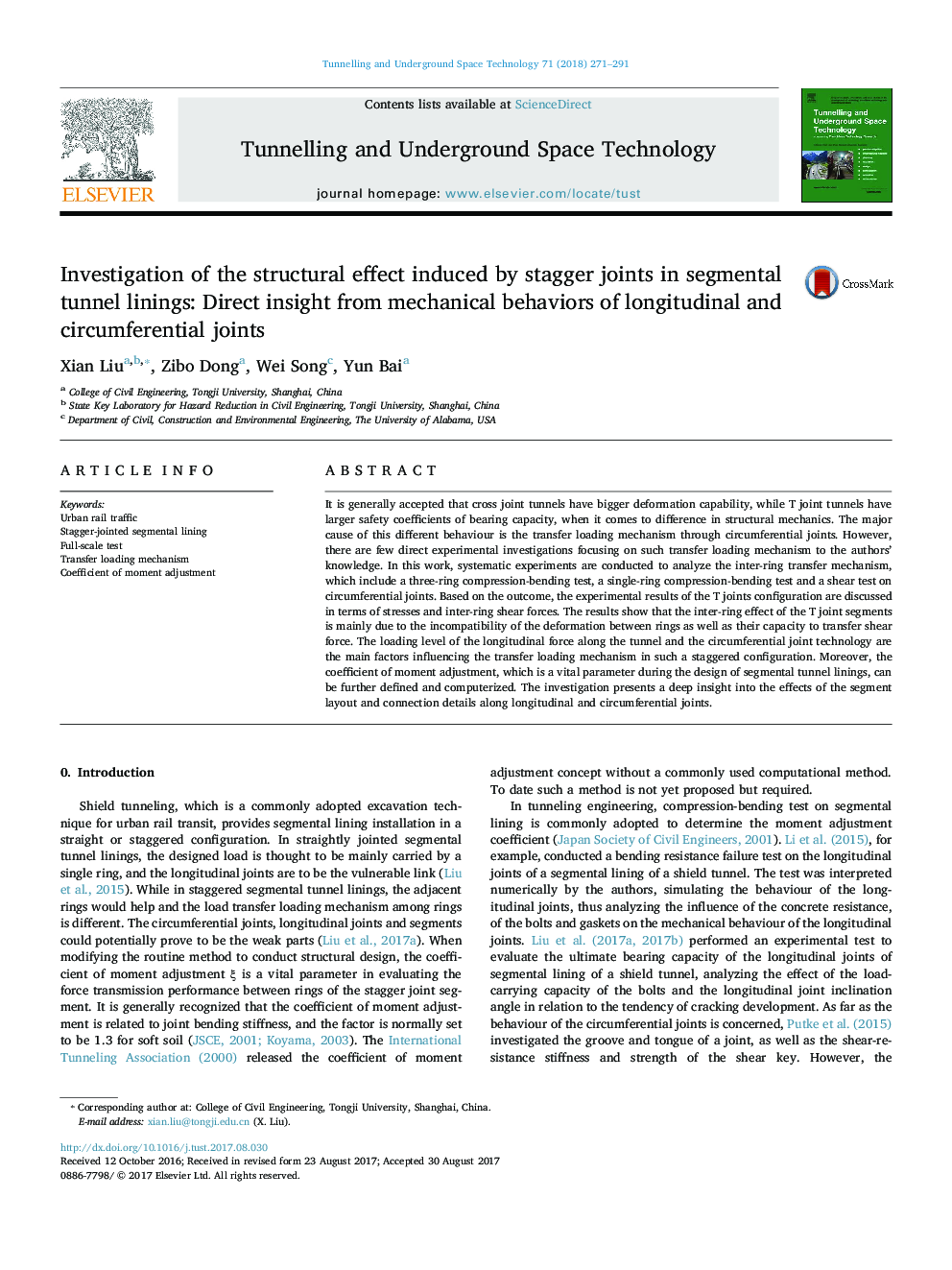| Article ID | Journal | Published Year | Pages | File Type |
|---|---|---|---|---|
| 4929196 | Tunnelling and Underground Space Technology | 2018 | 21 Pages |
It is generally accepted that cross joint tunnels have bigger deformation capability, while T joint tunnels have larger safety coefficients of bearing capacity, when it comes to difference in structural mechanics. The major cause of this different behaviour is the transfer loading mechanism through circumferential joints. However, there are few direct experimental investigations focusing on such transfer loading mechanism to the authors' knowledge. In this work, systematic experiments are conducted to analyze the inter-ring transfer mechanism, which include a three-ring compression-bending test, a single-ring compression-bending test and a shear test on circumferential joints. Based on the outcome, the experimental results of the T joints configuration are discussed in terms of stresses and inter-ring shear forces. The results show that the inter-ring effect of the T joint segments is mainly due to the incompatibility of the deformation between rings as well as their capacity to transfer shear force. The loading level of the longitudinal force along the tunnel and the circumferential joint technology are the main factors influencing the transfer loading mechanism in such a staggered configuration. Moreover, the coefficient of moment adjustment, which is a vital parameter during the design of segmental tunnel linings, can be further defined and computerized. The investigation presents a deep insight into the effects of the segment layout and connection details along longitudinal and circumferential joints.
